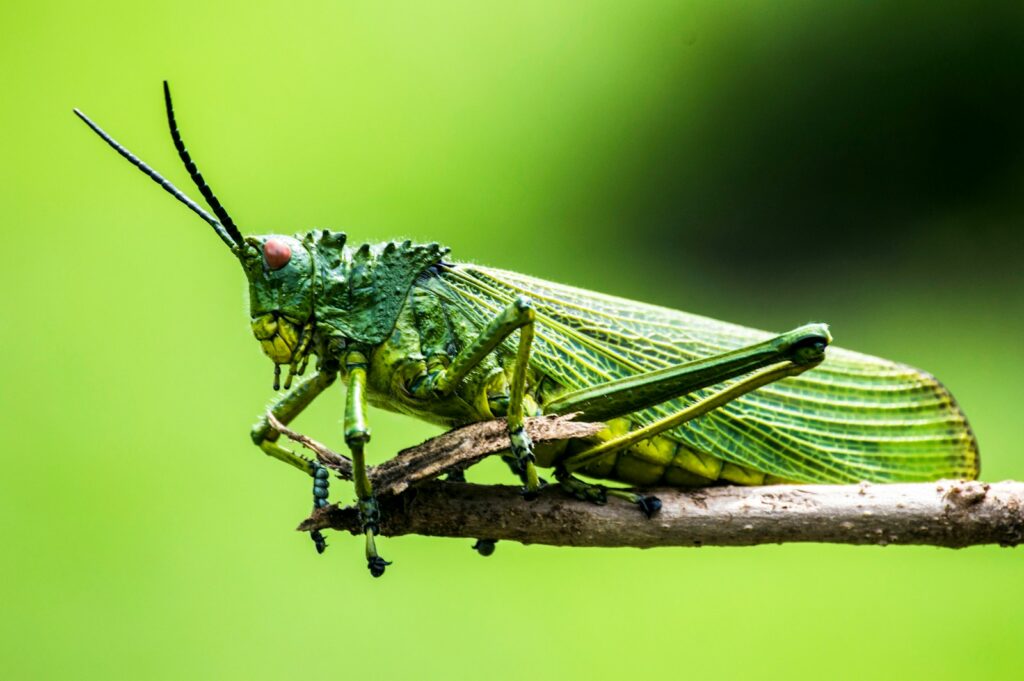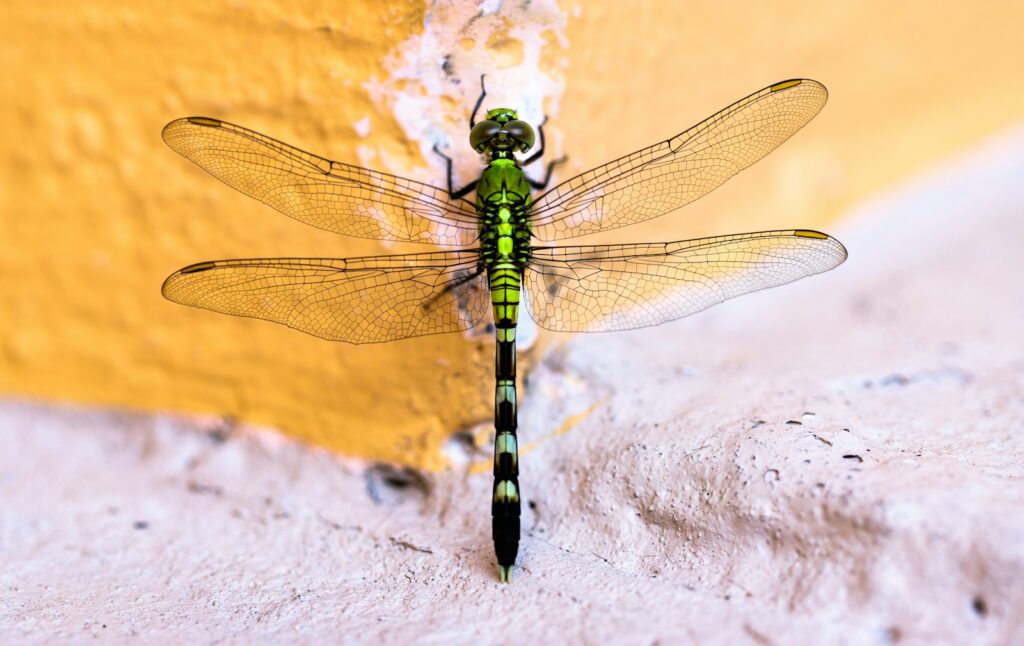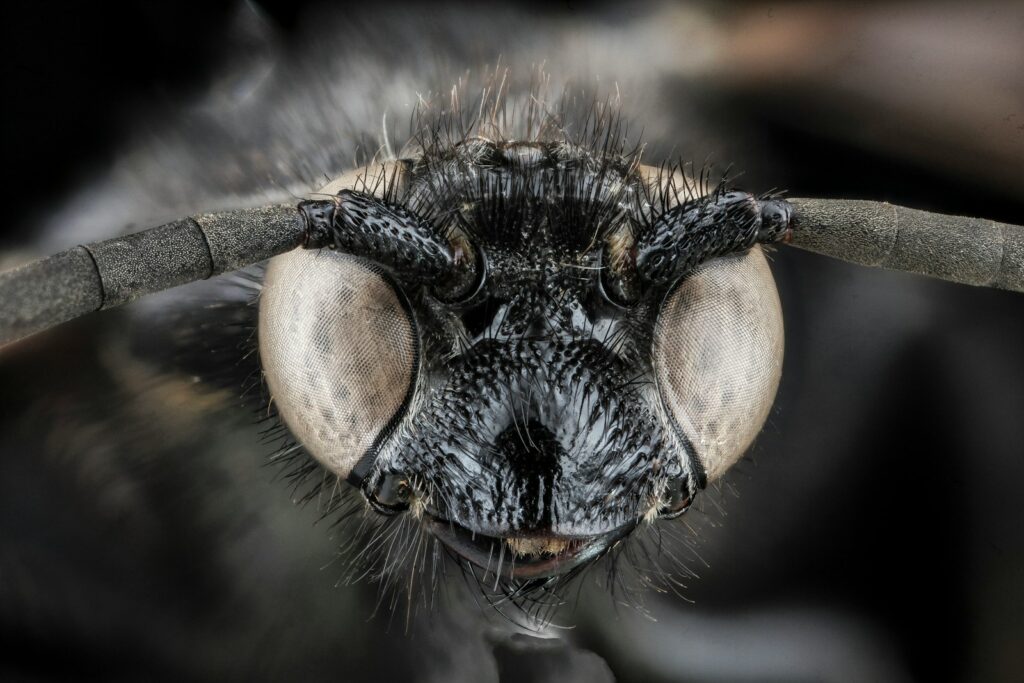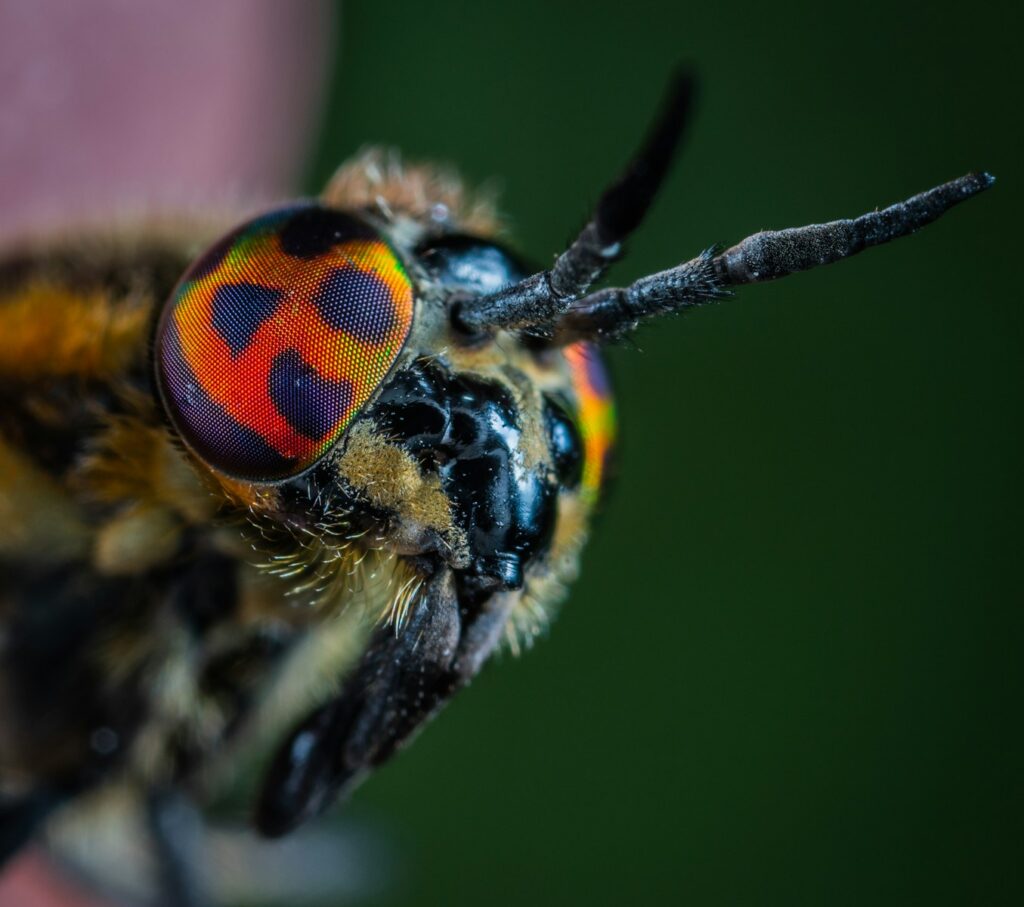In an era where wildfires increasingly threaten ecosystems and communities worldwide, nature offers surprising allies in fire prevention. While insects are often viewed as pests or merely incidental parts of biodiversity, certain species play crucial roles in managing vegetation that could otherwise become dangerous wildfire fuel. These six-legged ecosystem engineers—ranging from grasshoppers to beetles—help reduce dry plant material through their feeding habits, creating natural firebreaks and modifying landscapes in ways that can limit fire spread. As climate change intensifies wildfire seasons globally, understanding and potentially harnessing these insects’ capabilities represents an overlooked but potentially valuable component of comprehensive wildfire management strategies. Their work happens silently in forests, grasslands, and shrublands, often unnoticed until we examine the complex web of ecological relationships that contribute to ecosystem resilience.
The Growing Wildfire Crisis

Wildfires have become increasingly destructive in recent decades, with climate change creating hotter, drier conditions that transform landscapes into tinderboxes waiting for ignition. In the western United States alone, the annual area burned has increased dramatically since the 1980s, with similar trends observed in Australia, the Mediterranean, and other fire-prone regions. These catastrophic blazes result not only from climate factors but also from vegetation buildup—particularly in areas where natural fire regimes have been suppressed or altered by human management. Dead grass, fallen branches, pine needles, and other plant debris create a continuous layer of highly flammable material that allows fires to spread rapidly across landscapes. This accumulation of fine fuels represents one of the most significant contributors to extreme fire behavior, making the role of organisms that naturally reduce such materials increasingly important.
Nature’s Tiny Firefighters

Insects represent nature’s overlooked firefighting force, with numerous species contributing to vegetation management across diverse ecosystems. Unlike large herbivores such as deer or cattle that selectively browse on living plants, many insects specialize in consuming dead or dying plant material that constitutes prime wildfire fuel. These natural fuel reducers operate at scales ranging from forest floors to grassland ecosystems, with their cumulative impact potentially reducing fire intensity and spread rates. Their consumption patterns can be highly efficient—some species can process several times their body weight in plant material daily. The most effective “fire-preventing” insects typically target fine fuels like dry grasses, leaf litter, and small twigs rather than larger woody debris, addressing precisely the material category that most readily ignites and carries wildfire across landscapes.
Grasshoppers and Locusts as Vegetation Managers

Grasshoppers and their swarming cousins, locusts, rank among the most significant insect herbivores in grassland ecosystems worldwide, with profound effects on vegetation structure. A single adult grasshopper can consume approximately half its body weight in plant material daily, with some species preferentially targeting dead or drying grasses. Studies in North American prairies have documented that during outbreak years, grasshopper populations can remove 21-23% of available plant biomass, creating discontinuities in the fuel bed that could potentially slow fire spread. Their feeding patterns often create a mosaic of vegetation heights and densities across landscapes, effectively serving as miniature firebreaks. However, their ecological impact represents a double-edged sword—while they reduce fire-prone material, excessive grasshopper populations can damage agricultural crops and rangeland productivity, highlighting the complex balance between beneficial and harmful effects of these insects.
Termites: Underground Decomposers

Termites play a crucial yet often unrecognized role in reducing woody debris and dead vegetation that could otherwise serve as wildfire fuel. Unlike many insects that focus on living plant material, termites specialize in breaking down cellulose in dead wood, fallen branches, and other lignin-rich materials. In tropical and subtropical savannas, termites can process up to 90% of the dead wood in their habitat, significantly reducing the quantity of combustible material on the landscape. Their subterranean colonies and foraging tunnels also create discontinuities in the soil and vegetation layer, potentially serving as natural firebreaks during low-intensity burns. Research in African savannas has demonstrated that areas with high termite activity experience less intense fires due to reduced fuel loads and the creation of bare patches around termite mounds. Additionally, termite mounds themselves can act as refugia during fires, protecting both the insects and other organisms that shelter within these structures.
Bark Beetles: Controversial Forest Modifiers

Bark beetles represent one of the most controversial insect groups in relation to wildfire dynamics, with complex and sometimes contradictory effects on forest fire risk. These small beetles target living trees, boring through bark to lay eggs and introduce fungi that eventually kill their hosts, creating patches of standing dead timber. In the short term (1-3 years after infestation), beetle-killed trees with dry needles still attached can increase crown fire potential due to their highly flammable condition. However, longer-term studies have revealed that 5-10 years after beetle outbreaks, forests often display reduced crown fire potential as needles and small branches fall and decompose, creating more open forest structures with discontinuous canopies. Research from the Rocky Mountains has shown that beetle-killed forest stands sometimes experience less severe fire effects than green forests during wildfires, challenging simplistic narratives about these insects. The relationship between bark beetles and fire highlights how insects can modify forest structure in ways that alter—but don’t simply increase or decrease—wildfire behavior and effects.
Detritivores: The Litter Processors

The forest floor hosts a diverse community of detritivorous insects that collectively consume and break down leaf litter and fine organic debris—materials that often serve as kindling for wildfires. Insects like springtails, oribatid mites, and certain beetles specialize in fragmenting and consuming fallen leaves and other plant detritus, accelerating decomposition rates and reducing fuel continuity. Studies in eastern deciduous forests have demonstrated that healthy detritivore communities can process up to 33% of annual leaf fall, significantly reducing the depth and flammability of the forest floor. Their activity transforms potential fire fuel into soil organic matter, effectively removing it from the fire equation. These insects work synergistically with fungi and bacteria in decomposition networks, creating feedback loops that maintain healthy nutrient cycling while simultaneously reducing fire hazard. Moreover, their continuous processing of forest floor material prevents the deep accumulation of duff and litter that can support smoldering fires capable of killing tree roots and soil organisms.
The Wood-Boring Specialists

Wood-boring insects like longhorn beetles and metallic wood-boring beetles specialize in breaking down dead and dying trees, accelerating their decomposition and reducing coarse woody debris loads in forest ecosystems. These insects typically target trees that have recently died from disease, drought, or other stressors, introducing bacteria and fungi that further speed decomposition while creating tunnels that increase wood exposure to moisture and microbes. A single fallen log colonized by wood-borers will decompose significantly faster than one protected from insect access, with studies demonstrating up to 30% faster mass loss in insect-accessible wood. Their activity converts standing dead trees and fallen logs into soil more rapidly, reducing the accumulation of large-diameter fuels that can support long-duration, high-intensity burning during wildfires. By accelerating woody debris breakdown, these insects help prevent the dangerous buildup of fuels that occurs in forests where decomposition processes are slow or interrupted.
Insect-Created Firebreaks

Some insects create physical gaps or discontinuities in vegetation that function as natural firebreaks, potentially limiting wildfire spread under certain conditions. Leaf-cutter ants in tropical and subtropical ecosystems clear vegetation around their colony entrances, creating bare soil patches that can span several square meters. These clearings can interrupt the continuity of fine fuels, potentially slowing ground fire spread during low to moderate-intensity burns. Similarly, harvester ants in grassland ecosystems often clear vegetation in circular patterns around their nests, creating distinct patches that can disrupt fire movement across landscapes. Research in Argentine grasslands has documented how large harvester ant colonies created sufficient bare ground to alter fire spread patterns during experimental burns. Though relatively small in scale, these insect-created firebreaks can combine with other landscape heterogeneity features to influence wildfire behavior in meaningful ways, particularly during less extreme fire conditions.
Dung Beetles: Indirect Contributors

Dung beetles contribute indirectly to wildfire prevention by facilitating more efficient grazing patterns among large herbivores like cattle, bison, and wild ungulates. These industrious insects quickly locate, excavate and bury animal dung, reducing pest habitat and recycling nutrients that support healthy grassland vegetation. Their activity encourages more uniform grazing patterns by removing dung pats that large herbivores typically avoid when feeding, thereby preventing the patchy accumulation of ungrazed, highly flammable grass around dung deposits. Studies in African savannas have shown that areas with healthy dung beetle populations experience more evenly distributed grazing pressure, resulting in less accumulated dead grass by the end of the growing season. This more uniform vegetation structure reduces the likelihood of intense, fast-moving grass fires that can threaten adjacent ecosystems. Additionally, their tunneling behavior aerates soil and improves water infiltration, supporting vegetation that remains greener and more fire-resistant during dry periods.
The Science of Insect-Fire Relationships

Scientific understanding of insect impacts on wildfire dynamics has expanded dramatically in recent decades, revealing complex relationships that defy simple characterization. Researchers employ various methodologies to quantify these effects, including exclusion experiments where insects are prevented from accessing certain plots, allowing direct comparison with natural insect activity areas. Advanced modeling approaches now incorporate insect herbivory and decomposition rates when predicting fuel accumulation and potential fire behavior across landscapes. Studies using prescribed experimental burns have demonstrated measurable differences in fire intensity and spread rates between areas with normal insect activity versus those where insects have been excluded or are abnormally abundant. Increasingly sophisticated remote sensing technologies allow scientists to detect landscape-scale patterns in vegetation structure resulting from insect activity, further illuminating how these small organisms influence fire regimes. This growing body of research suggests that healthy, diverse insect communities contribute to ecosystem resilience against catastrophic wildfires in many, though not all, circumstances.
Harnessing Insects for Fire Management

The potential for deliberately utilizing insects in wildfire prevention strategies represents an emerging frontier in ecological engineering and forest management. Rather than introducing non-native species—which history has repeatedly shown can create catastrophic unintended consequences—researchers are exploring ways to support and enhance native insect populations that naturally reduce fuel loads. Some forest managers are experimenting with providing optimal habitat conditions for beneficial decomposer insects through practices like leaving certain amounts of woody debris to support detritivore populations while removing excessive accumulations. In grassland systems, careful timing of grazing and prescribed burns can help maintain healthy populations of insects that process dead grass material. Research into the chemical signals that attract specialized wood-decomposing insects might eventually lead to tools that could accelerate colonization of hazardous fuel accumulations. However, these approaches remain largely experimental, requiring careful research to avoid disrupting the delicate balance of forest and grassland ecosystems while achieving meaningful fire risk reduction.
Climate Change Implications

Climate change is dramatically altering the relationship between insects, vegetation, and fire in complex and sometimes contradictory ways. Warmer temperatures typically accelerate insect metabolism and reproductive rates, potentially increasing their capacity to process plant material and reduce fuel loads in some ecosystems. However, climate disruptions also drive more frequent drought conditions that stress vegetation, creating more dead plant material than insect communities can process effectively. Some beneficial decomposer insects may face population declines due to increasing temperature extremes and altered precipitation patterns, reducing their ecosystem services precisely when they’re most needed. Climate-driven range shifts may bring new insect species into ecosystems where they lack natural predators or where their feeding activities interact with vegetation in novel ways that could either mitigate or exacerbate fire risk. Understanding these dynamic relationships requires ongoing research across different ecosystem types to identify where insect activities may help buffer against climate-enhanced fire risk and where management intervention might be necessary.
The Balanced Perspective

A balanced understanding of insects’ role in wildfire dynamics must acknowledge both their benefits and limitations as nature’s fuel reducers. While certain insects undoubtedly help reduce fire-prone vegetation in specific contexts, their impact represents just one factor in complex ecosystems where weather, topography, vegetation types, and human activities all strongly influence fire behavior. Insect outbreaks that kill large stands of trees can temporarily increase fire risk before eventually creating more fire-resistant landscape structures. The most beneficial fire-prevention effects typically come from diverse insect communities operating within their natural population cycles rather than from single species or outbreak conditions. Additionally, human-caused disruptions to insect communities—through pesticide use, habitat fragmentation, introduction of invasive species, and climate change—may be undermining these natural fire prevention services in many regions. Recognizing insects as valuable though not sufficient partners in wildfire management encourages a more holistic approach that works with rather than against ecological processes to build landscape resilience.
Conclusion

In conclusion, insects offer an underappreciated but significant contribution to wildfire prevention through their continuous processing of vegetation that would otherwise become dangerous fuel. From grasshoppers reducing dry grasses to termites breaking down woody debris, these small creatures collectively implement a distributed fuel reduction system that operates year-round across vast landscapes. While their impact cannot substitute for comprehensive fire management strategies—particularly under extreme weather conditions—healthy insect communities represent an important component of resilient ecosystems. As climate change intensifies wildfire threats globally, working with rather than against these natural processes becomes increasingly important. Understanding and potentially enhancing insects’ role in vegetation management offers promising avenues for ecological approaches to wildfire resilience that complement traditional fuel treatment methods. These tiny wildfire fighters remind us that solutions to our most pressing environmental challenges often already exist within the intricate relationships of functioning ecosystems.

